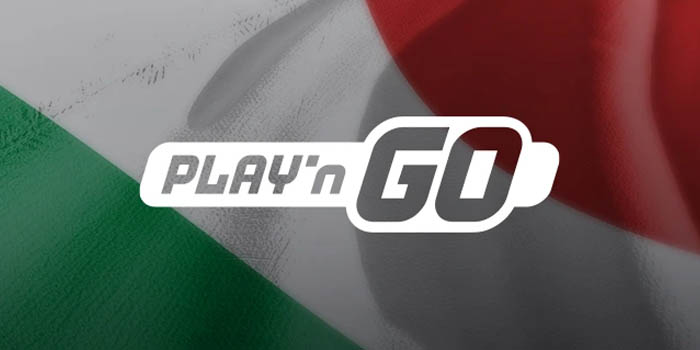Regulating Game Design: Kalamba, Habanero and Pariplay Explore the Dynamics of Regulated Markets

A recent flurry of new regulatory activity has reinforced the importance of staying ahead of the curve when it comes to game design.
How much do developers consider ever-changing regulations to ensure their games possess the delicate balance of social responsibility and engaging gameplay features to achieve commercial viability?
We have sought out the opinions of established industry names that are equipped with the tools necessary to drive awareness and chart the path for others who want to achieve similar success. No two stories are the same, though, and our guests explain why.
Arcangelo Lonoce (Habanero), Andy Sekula (Kalamba Games), and Vladimir Pavlov (Pariplay) take a closer look.
Is there a specific checklist/roadmap that you work to during the development stages to ensure regulatory compliance?
Habanero Head of Business Development Arcangelo Lonoce: There is not. Regulatory compliance is supplementary to the game development process, with a title’s foundational elements created first, then regulatory alterations made after that.
As a responsible supplier, we always treat certain thematic effects as a no-go, such as those which might be interpreted as targeting minors. That said, there is no specific roadmap we adhere to from a compliance perspective – compliance requirements usually affect the front-end rather than the core of the game.
Kalamba Games Head of Games Andy Sekula: Yes, there most definitely is – staying compliant within the regulatory framework is always on top of our list. We have extensive internal testing procedures, and we are in close contact with accredited testing labs, which ensures that our slot games meet all the regulatory requirements for a given jurisdiction.
Pariplay VP Product Vladimir Pavlov: Product compliance is one of the key tenets within our game design process. Before being offered to operator partners, each new game we develop passes through an internal review of features and visuals to ensure we are in line with regulations across the multiple jurisdictions we operate in.
Our game framework’s flexibility allows us to apply dynamic changes according to particular markets, with feature switching available where applicable.
How much, if any, involvement or feedback do you have with the various authorities? Do you think a closer relationship would benefit game design and development?
Lonoce: We have a collaborative relationship with some regulators, while others only provide a limited input. We communicate closely with bodies such as Malta’s MGA and Romania’s ONJN, but in general, from a supplier’s perspective, there’s isn’t much involvement from regulators.
A lot depends on the licensing requirements in question. In some markets, including Romania, suppliers must adhere to distinct requirements, separate from operators.
I don’t think a closer relationship would benefit game design, but it would create a more comprehensive understanding of what the regulators are trying to achieve and more consensus on responsible gambling.
Sekula: We get our games accredited through our partners that act as intermediaries between us and the regulatory bodies. For example, in the German regulation process that emerged in Q4 last year, our distribution partners, namely Relax and Oryx, were very helpful in facilitating our questions and offering possible solutions to the new requirements.
That said, we’ve already had quite a few opportunities to speak to regulatory authorities directly. There are many interesting markets still to go for us, and having direct contact with the authorities, especially when the new regulations are emerging, may greatly help us understand and adapt to new requirements.
Pavlov: We believe there is plenty of room to improve the communication and feedback mechanisms between regulators and game providers. Often, new regulatory frameworks are fairly vague and open to interpretation.
This leads to time-consuming consultations with compliance teams, local law firms, and partner casino operators until the full picture eventually becomes clear. All of this could be avoided if we instead had an open dialogue with the regulatory body. This is something I believe the industry, in general, should strive for.
Is a pro-active attitude adopted in terms of predicting what requirements may be in the future, thereby minimizing potential mitigatory work?
Lonoce: If operators are bound by regulatory requirements which, for example, limit RTPs, then you need to equip them accordingly. Particularly in today’s climate, new developments could arise that render your business model unsustainable in a certain market – if that happens, you obviously need to adjust.
That said, you should never design a game based purely on what the regulator wants. Games are made for players – not government authorities. Again, it all depends on the market, and therefore the regulation, in question.
Sekula: In retrospect, a very proactive attitude of our distribution partners helped us undergo the transition process in Germany. Their legal teams were in constant contact with the regulators, which greatly helped us understand and apply all the requirements to stay compliant.
In the case of direct integrations using our own Bullseye RGS platform in regulated markets, it totally makes sense to be proactive in that respect to better understand and plan ahead for all the potential changes that would need to be made in our games.
Pavlov: Staying vigilant is important, but it is not a bulletproof strategy. Markets regulate quickly and without much of a heads-up warning, so staying nimble is key. This is especially valid for the US market, where being able to turn requirements around quickly is crucial. Speed to market is everything, and I am proud that this is the culture we foster at Pariplay. Yes, we will be surprised occasionally, but we will always manage to shift focus and resources to meet any deadline.
Do you have any past examples of specific responsible design elements, and what else do you see as potentially being key going forward?
Lonoce: We have not created any new design elements in order to cater to regulatory requirements on responsible gaming. What we have done, however, is make our existing solutions compatible with regulatory requirements.
But the requirements of one jurisdiction may not match those mandated by another, so although responsible design elements can be made compatible with a particular jurisdiction, we won’t necessarily implement those elements across the board. When it comes to regulation, it’s all about regionalizing your approach.
Sekula: One of the most impactful regulations in recent months happened in Germany, where several requirements affected various design elements of our slot games, like removing autoplay, limiting the maximum bet to €1, removing jackpots, and forcing a five-second delay between subsequent spins. In some cases, we had to provide new math models for our games to be compliant with the regulations.
Going further back, there was a regulation introduced in the UK prohibiting the usage of buy-in features. It meant we had to remove our signature feature HyperBonus for all our players from the UK, which we, of course, did.
It’s hard to foresee what the regulators could do next. Lots of decisions will likely be backed up by increasingly more advanced behavior analysis using AI segmentation techniques or ad hoc counter-measures. This could include limiting maximum monthly deposits in the age of lockdowns as people are more exposed to online casino offers because they spend more time in front of their laptops, instead of in restaurants, for example.
Pavlov: The regulation of the German market caught a lot of companies by surprise. The combination of €1 max bet, a minimum of five seconds between spins, and no jackpots warrant a complete rethink of the game design strategy for the German market.
The upcoming UK Gambling Commission changes in October are also sure to shake up the market. Wins below the stake will be downplayed, which will affect players’ overall experience of the games. Game providers need to be creative and introduce new features and math models that are engaging for players while remaining compliant.
Stoyan holds over 8 years of esports and gambling writing experience under his belt and is specifically knowledgeable about developments within the online scene. He is a great asset to the GamblingNews.com team with his niche expertise and continual focus on providing our readers with articles that have a unique spin which differentiates us from the rest.















